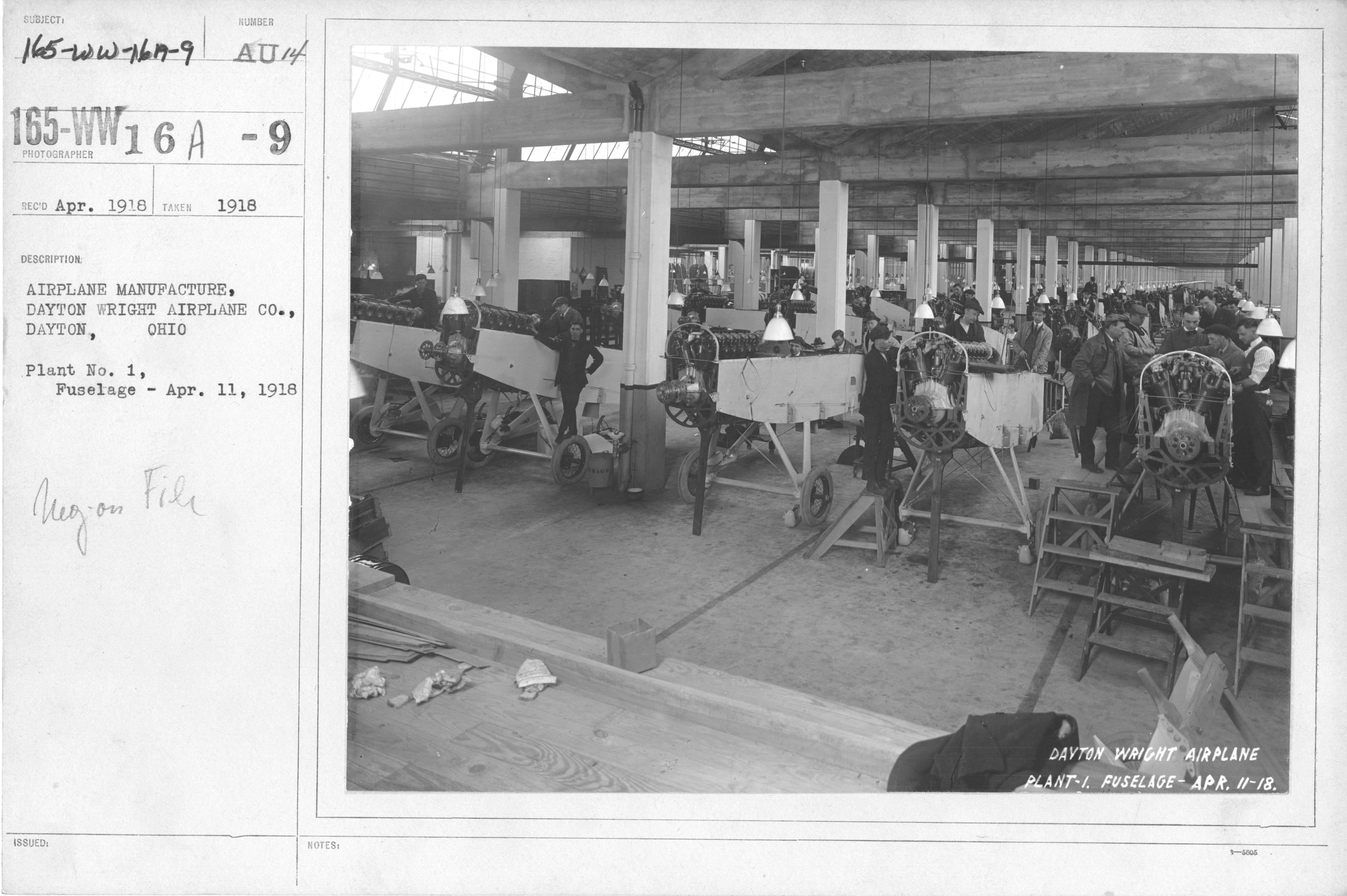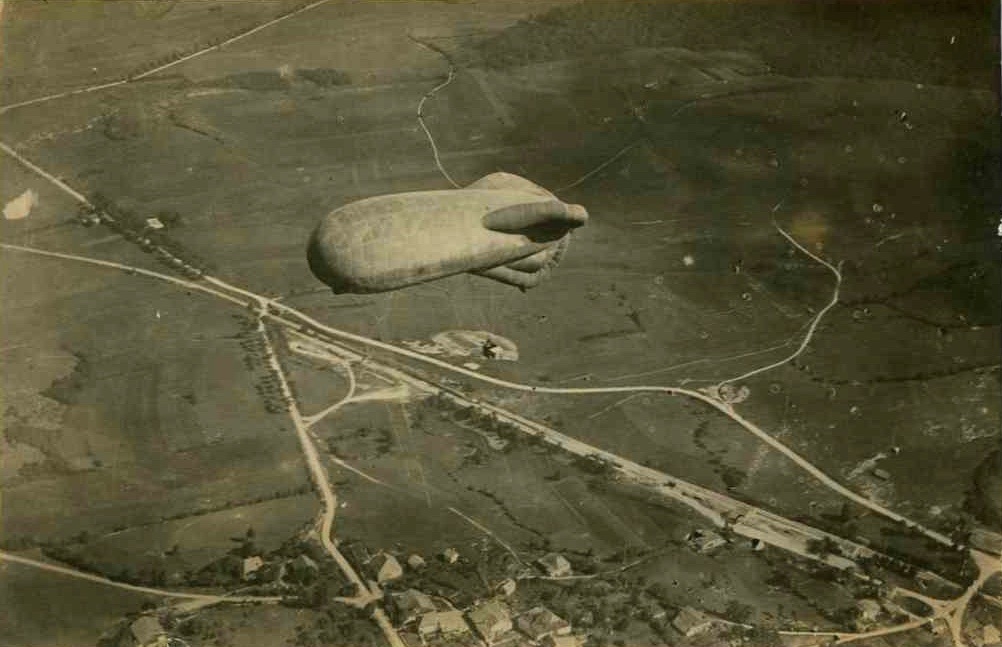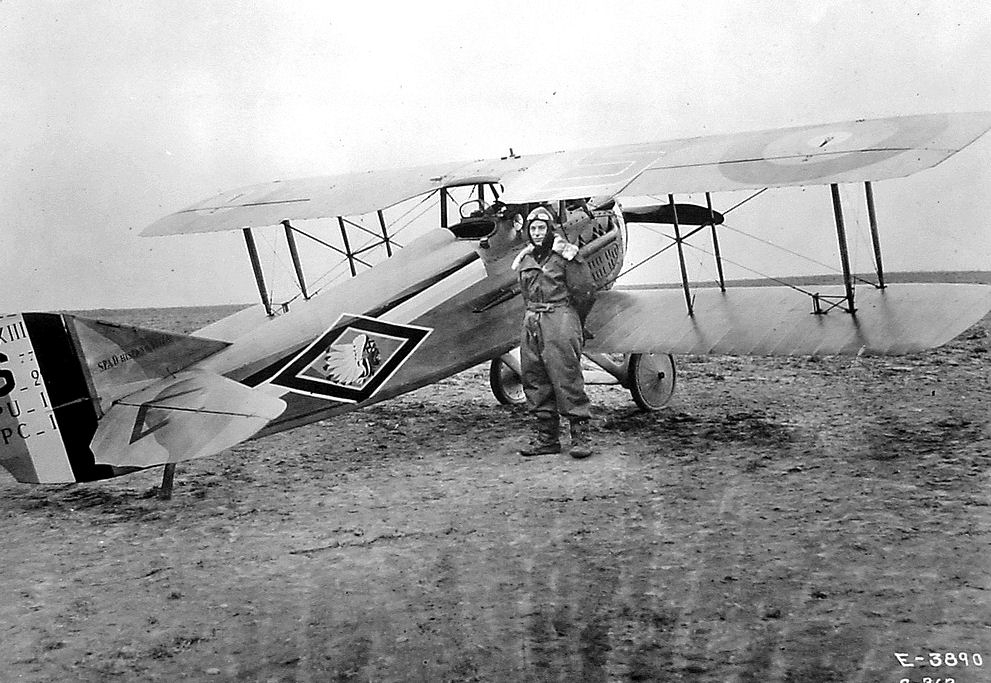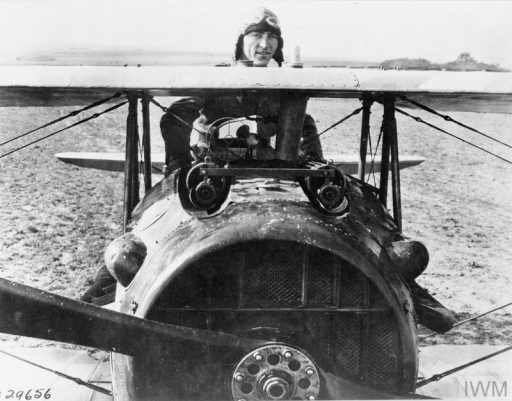On 29 April 1918, Lieutenant Edward V. Rickenbacker of the US Air Service was to score the first of the air victories that would, within a few short months, catapult him to the status of America’s ‘Ace of Aces’ in World War I. For many, Rickenbacker, the All-American hero, came to symbolise his country’s air effort, but it had taken a long time to bring the Air Service to the point in spring 1918 when his and others’ squadrons would finally make their mark in combat, as Patrick Gregory reports.
‘Eddie’ Rickenbacker was already a very public figure – and a dashing figure at that – before he even set off for wartime France. A career as a racing driver had seen him take part in the first Indianapolis 500 race and set the auto speed record at Daytona Beach, Florida at an astonishing 134 miles per hour. But by 1917 he was anxious to get to Europe, and to use his speed skills in America’s war effort.
Beginning as a driver for General John Pershing’s AEF staff officers, Rickenbacker acted as chauffeur for, among others, the man credited with developing the doctrine of American air power in the war, Colonel – later General – ‘Billy’ Mitchell. Within a few short months, Rickenbacker had joined the nascent US air effort. Yet for him, as for his colleagues, building that capability would be a long-drawn out process.
Stand-alone
American aviators had already been in action over the front in different guises in the years preceding, firstly in ones and twos with the French Air Service and British RFC. Then in 1916 and 1917 that became more organised with the Lafayette Escadrille & Lafayette Flying Corps units of volunteer American pilots. But it would not be until 1918 that the US Air Service was in a position to operate as a stand-alone force.
When America entered the First World War in 1917, US military aviation found itself in a parlous state. Both men and machines were in chronically short supply. The fledgling ‘Aviation Section of the Signal Corps’, as it was still then officially described, could boast only 131 officers, mainly pilots and student pilots. But of those 131 only 26 were deemed fully trained and none of those had had proper combat experience.

Aircraft under construction in 1918 at the Dayton Wright Airplane Company, Dayton, Ohio (Photo: US National Archives — 17340798/Wikimedia Commons)
A flurry of activity saw Congress voting through an appropriations bill for a hefty $640 million to try to bring the service up to speed and plans were drawn up to both manufacture and try to buy in prodigious quantities of new military aircraft. As this was happening, a large pilot-training initiative got underway in both Europe and the US.
It was an ambitious rebuilding programme and one that would take time to bear fruit. The first new recruits of the training schools began to come on stream early in 1918, but matching men up to machines and organising them into fully-rounded US Air Service squadrons was a slow process.
Delays
Guaranteeing a steady supply of aircraft would remain an ongoing problem for the service. At the outset, the Aircraft Production Board and its successor had drawn up plans to manufacture what aircraft and engines they could in the United States and to deliver them into theatre or to flying schools. The JN-4 ‘Jenny’ trainer and American-adapted De Havilland DH-4 reconnaissance bombers with US built Liberty engines were the most successful product of that drive. The 12-cylinder Liberty was a particular success story. But the planes were slow to come on stream. Of the total 11,760 planes produced in America, of all types, only around 1,200 combat aircraft ever reached Europe during the Great War.
It had always been understood, and planned, that the bulk of fighter aircraft would be bought in and supplied by the Allied nations in Europe. But even that conveyor belt remained faulty. A plan signed off in late summer 1917 by Pershing with the French Air Ministry had promised 5,000 service aircraft and 875 trainers by June 1918. In fact, by the time that date came along less than a quarter of the total had been delivered.
Underway
Despite those limitations, the US air effort proper did finally get underway in early 1918, albeit in small, incremental stages. The first personnel of the First Pursuit Group began to assemble in January and early February at the Villeneuve-les-Vertus aerodrome in the Champagne sector south of Reims. The 95th ‘Kicking Mule’ and 94th ‘Hat in the Ring’ squadrons reported for duty there between mid-February and early March.
On 19 February some of the famous Lafayette Escadrille 124 began operations as an American unit, with Major William Thaw leading 17 of his transferred pilots to form the new 103rd Pursuit Squadron with a new group of American mechanics.

Aerial photograph of a US military observation balloon flying near Pont-à-Mousson, France – circa 1918 (Photo: From Henry L. Graves Papers, State Archives of North Carolina/Flickr Commons/Wikimedia Commons)
In time, a number of his veterans would go on to become squadron leaders of other units being assembled, forming an important spine of the fledgling service. But for the next five months, the 103rd would actually remain outside US Air Service control, continuing to operate under the banner of the French Air Service. So the distinction of being the first actual Air Service unit into action fell to a balloon observation crew of the 2nd Balloon Company, which was moved into position some 100 miles to the east of the others at Royaumeix near Toul on 26 February.
When German forces launched their first spring offensive in late March, the only mainstream units of American planes in any way capable of combat operations were three observation squadrons – although even they were still going through final training – and the two pursuit squadrons of the 94th and 95th. As it happens, the offensive saw the latter pair moved from their Villeneuve base to make way for French and British night bombardment squadrons.
But even before their move, fresh teething problems had seen some of their number take off on their first patrols in an oddly vulnerable position. Pilots of the 95th Aero did so without guns in their new Nieuport 28 planes because the weapons had not yet arrived; others still had yet to receive the necessary gunnery training. Sixteen pilots were ordered to Cazaux in south-west France to complete their courses.
The first to do so were transferred to the 94th Squadron. Under the watchful eye of Major Raoul Lufbery, a key figure and top ace of the old Lafayette Escadrille, the ‘Hat in the Ring’ benefitted from a new consignment of machine guns finally arriving in late March.

Spad XIII of Captain Robert Soubiran, 103rd Aero Squadron, with insignia of old Lafayette Escadrille Native American Indian head (Photo: US Army/Wikimedia Commons)
So it was that the stage was finally set for a combat-capable Air Service to take to the skies with some degree of assuredness. Within weeks the 94th had recorded its first kills. On Sunday morning 14 April 1918, Lieutenants Alan Winslow and Douglas Campbell shot down two German fighter planes near their new Gengault airbase outside Toul.
Just over a fortnight later, Eddie Rickenbacker had followed suit. Late in the afternoon of 29 April the call went out that a German plane had been spotted crossing enemy lines and heading south not far from the 94th’s base. Scrambling up in the air and flying alongside Lafayette veteran James Norman Hall, Rickenbacker and Hall manoeuvred around a German Pfalz pursuit plane. Within minutes they had brought it down. Six weeks later, the 94th had notched up 17 official kills and several other unconfirmed victories; Rickenbacker himself would go on to achieve 26 victories in the war in his own right.
The US Air Service had finally arrived.
Patrick Gregory is co-author with Elizabeth Nurser of ‘An American on the Western Front: The First World War Letters of Arthur Clifford Kimber 1917-18’ (The History Press) American on the Western Front @AmericanOnTheWF.
© Patrick Gregory and Centenary News
Images courtesy of Imperial War Museums © IWM Q 114172 (Eddie Rickenbacker)
US National Archives – 17340798/ unrestricted/Wikimedia Commons (Dayton Wright Airplane Co.)
State Archives of North Carolina, Henry L. Graves Papers, WWI 55, Military Collection/Flickr Commons/No known copyright restrictions/Wikimedia Commons (Barrage Balloon)
US Army/Wikimedia Commons/Public Domain (Capt Robert Soubiran)
© Patrick Gregory and Centenary News
Posted by: CN Editorial Team
